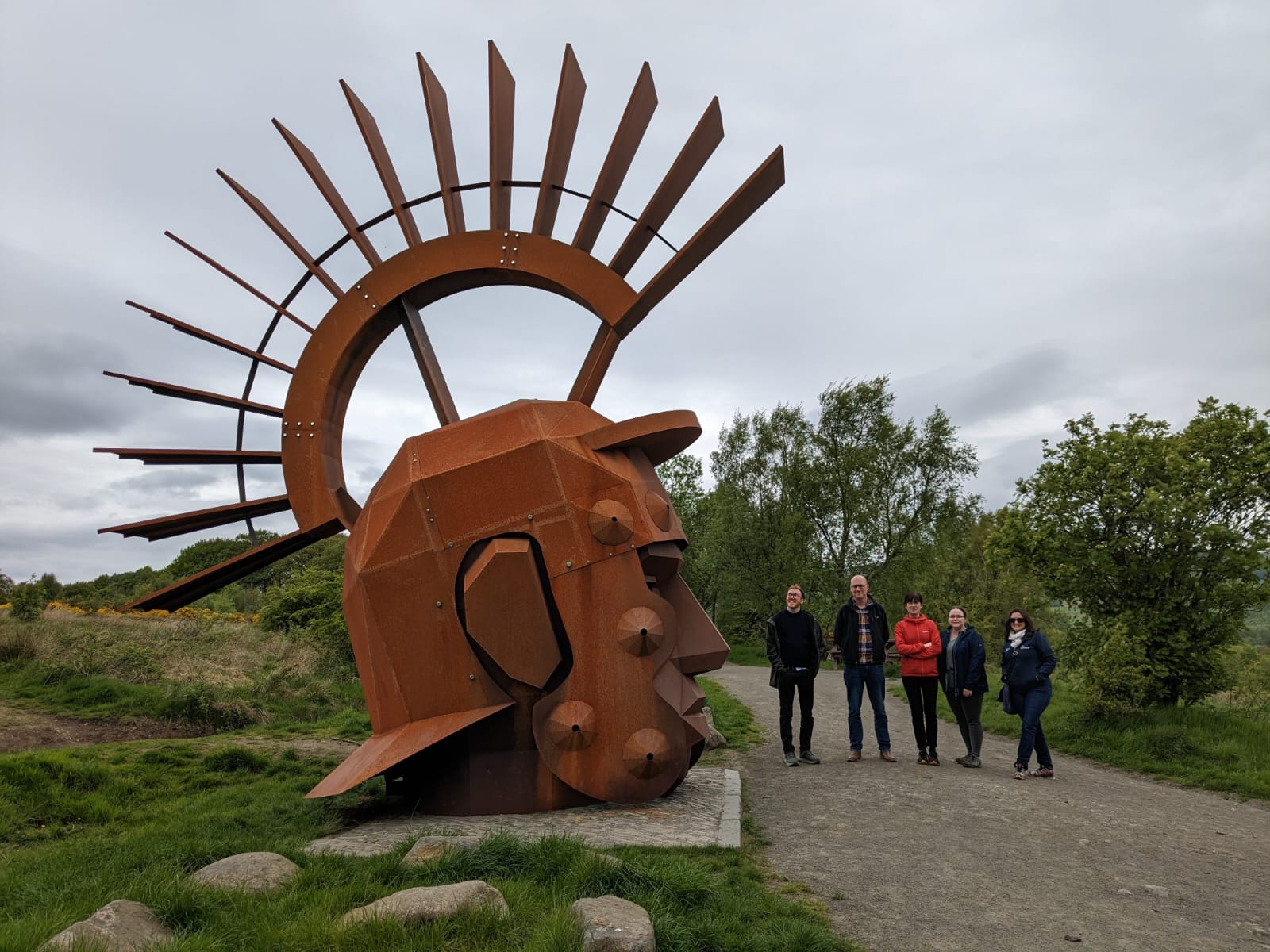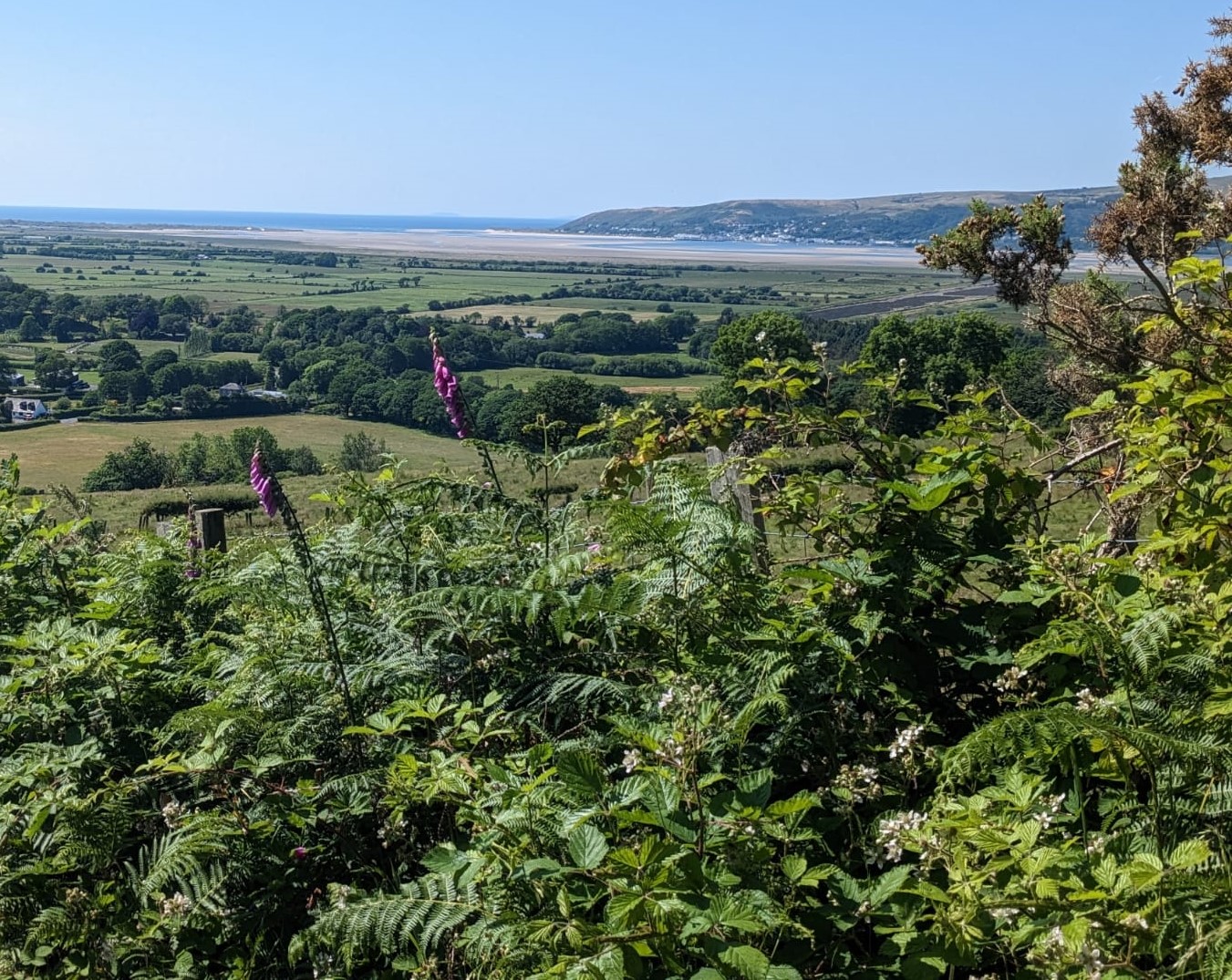Liam Smyth & Alison Smedley – July 1, 2023 – 12 min read
The Local to Global Project Team has been out and about in the last few weeks, visiting the project’s three pilot sites, the Antonine Wall World Heritage Site, Biosffer Dyfi Biosphere and the Black Country Global Geopark.
Local to Global, the project funded by the National Lottery Heritage Fund to build a resilient UNESCO network in the UK, will work with these sites to facilitate stakeholder mapping exercises, audience development plans, fundraising strategies and digital development.
The Project Team has now visited each of the three sites for an immersive visit, meeting with the local co-ordinators and their wider teams and partnership organisations.
Learning about the communities and projects that make up these designations will help to ensure that the opportunities provided by the Local to Global project will benefit not only the pilot sites themselves, but also the wider network of UNESCO designations in the UK through the sharing of best practice, toolkits and case studies which will form later stages of the project.
The Antonine Wall
This coast-to-coast and once formidable barrier has been part of the Frontiers of the Roman Empire World Heritage Site since 2008. Originally a fortified wall across the lowlands of Scotland, it goes from coast to coast from the Firth of Forth to the Firth of Clyde.
The Antonine Wall has left its mark on Scotland’s landscape with steep ditches and the remains of ramparts, forts and bathhouses all waiting to be explored, as we discovered on an amazing one-day exploration of a section of the Wall between Falkirk and Croy. “You can take a virtual trip along the wall yourselves with this film that was produced as part of their recent ‘Rediscovering the Antonine Wall’ project”
We are grateful to Riona McMorrow, the site coordinator for the Antonine Wall, and her colleagues at Historic Environment Scotland, for the time they spent with us. The visit gave us an overview of the history and geography of the wall, as well as an understanding of some of the challenges and their current projects, as their previous Heritage Lottery funded project, Rediscovering the Antonine Wall, comes to an end.

The Black Country Geopark
Our next visit was to the UK’s second most recent Global Geopark, the Black Country, which received its UNESCO status in 2020 for internationally significant geology and its natural and cultural heritage.
The Black Country played a major role in the industrial revolution, being rich in minerals such as limestone, ironstone, fireclay and coal. The name comes from the intense smoke, soot and furnaces associated with heavy industry which turned it into a land that was ‘black by day and red by night’.
Today the geology and industrial heritage go hand in hand with wildlife and nature, as we discovered on a fascinating day being shown around several of the area’s nature reserves and geological sites by Graham Worton. Graham is Keeper of Geology for the Metropolitan Borough of Dudley as well as the Geopark Coordinator. Graham treated us to a whistle-stop tour where we learnt huge amounts about the geology which paved the way for the Black Country to become the world’s first large industrial area.
With thanks to Graham for giving up his time to show us around, especially at such a busy time with the Geopark going through its revalidation process. We gained an insightful overview of the geology and its relationship with the industrial history of the Geopark area, as well as an understanding of some of the current issues and challenges being faced by the Geopark across its four metropolitan borough areas.

Biosffer Dyfi Biosphere
Our third and final pilot site visit was to mid Wales to visit the Biosffer Dyfi Biosphere, which was awarded UNESCO biosphere status in 2009. This valley and surrounding area, stretching south to the university town of Aberystwyth, has a rich variety of landscapes from high peat moorland, wide estuary, sand dunes and beaches, broadleaved woodland, coniferous forest, farmland, saltmarsh and lowland peat bog, all creating a haven for wildlife. During our visit, hosted by Dyfi Biosphere Co-ordinator, Andy Rowland, we were lucky enough to see most of those different types of landscape, and to meet many of the projects and wider partners that work within the Biosphere.
While we were in the area we were able to take part in the Dyfi Biosphere’s annual meeting, where we met many people from the local Welsh-speaking community, and heard their views on the future of the Biosphere and its various projects.
Many thanks to Andy for organising such an in-depth programme of visits for us, enabling us to get a real feel for the current issues and challenges in this Biosphere area, where rising sea levels along with historic changes to the landscape like the building of the railway are bringing serious challenges for the future.

All three Local to Global pilot sites have navigable and historic waterways as part of their landscape. With flooding and drought becoming more and more significant both locally and globally, there is a role for both natural and man-made waterways to play in terms of flood alleviation, transfer of water, sustainable tourism, leisure opportunities for the health and wellbeing of the local population and providing valuable wildlife corridors in urban areas.
These are issues that many UNESCO designations are facing, and the work of UNESCO’s Intergovernmental Hydrological Programme will be of interest for the research and development work it is carrying out into national, regional, and global water challenges.

The Local to Global project is made possible with The National Lottery Heritage Fund, thanks to National Lottery players.
Share this via…

